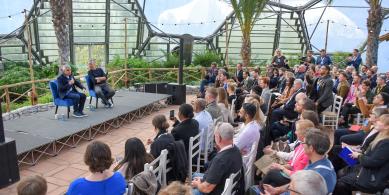About 45% of your behaviour is habitual, an automatic, unconscious response to a cue or trigger in your environment.
We barely notice these habitual actions and certainly don’t need to think consciously about them.
But when we start trying to build new habits it is very hard to forge those delicate cobwebs of early behaviour into chains of routine.
To build a deep neural loop where a routine or behaviour is first triggered by a cue and then typically followed by a reward (a reward which can be intrinsic or extrinsic, conscious or subconscious) requires a lot of conscious effort initially. But once they are built they can last forever, which is why habits are what most of us want to build in our customers.
In fact, when you examine why a new product or service or app failed it is often not because it is bad, but because it has not found a space in consumers’ busy lives; it has failed to locate critical behavioural footholds from which to build, to create new habits.
Take a look at your kitchen cupboard or bathroom cabinet, or even the apps on your phone and I’ll bet you have some relics that you bought oh-so-enthusiastically, but then forgot to use.
Changing behaviour once is easy; changing it for good requires some pretty clever thinking.
We published our first habits book: “Habits: The Holy Grail” with The Marketing Society in 2014, drawing on current behavioural science knowledge about how to break, make and measure habitual behaviour - all of which is still as relevant today as it was four years ago.
What has changed four years later, is the availability of even more research into the strategies on which you can draw to make habits easier to establish.
It’s this evolution of thinking that has driven the writing of our second book on habits “How to Make New Behaviour Stick”, launched this month, which outlines six key strategies for building new habits.
These strategies are based on the work of David Neal, a psychologist at Duke University’s Center for Advanced Hindsight, who has drawn on decades of both academic and practitioner research by psychologists, sociologists and neuroscientists. You will see which of these six strategies are essential and which are ‘good to have’ when you can. As with our first book, we’ve made the strategies as easy as possible to apply, with a helpful checklist and practical case studies to draw on.
Being brave often involves building new habits and this book can support you in your ‘brave agenda’.
You can download ‘How to Make New Behaviour Stick’ as an e-book (pdf) here.
Listen to the podcast about our book below: Crawford Hollingworth of The Behavioural Architects sits down with The Marketing Society chief exec, Gemma Greaves, to talk about leadership, bravery, forming habits and more.
Newsletter
Enjoy this? Get more.
Our monthly newsletter, The Edit, curates the very best of our latest content including articles, podcasts, video.
Become a member
Not a member yet?
Now it's time for you and your team to get involved. Get access to world-class events, exclusive publications, professional development, partner discounts and the chance to grow your network.




